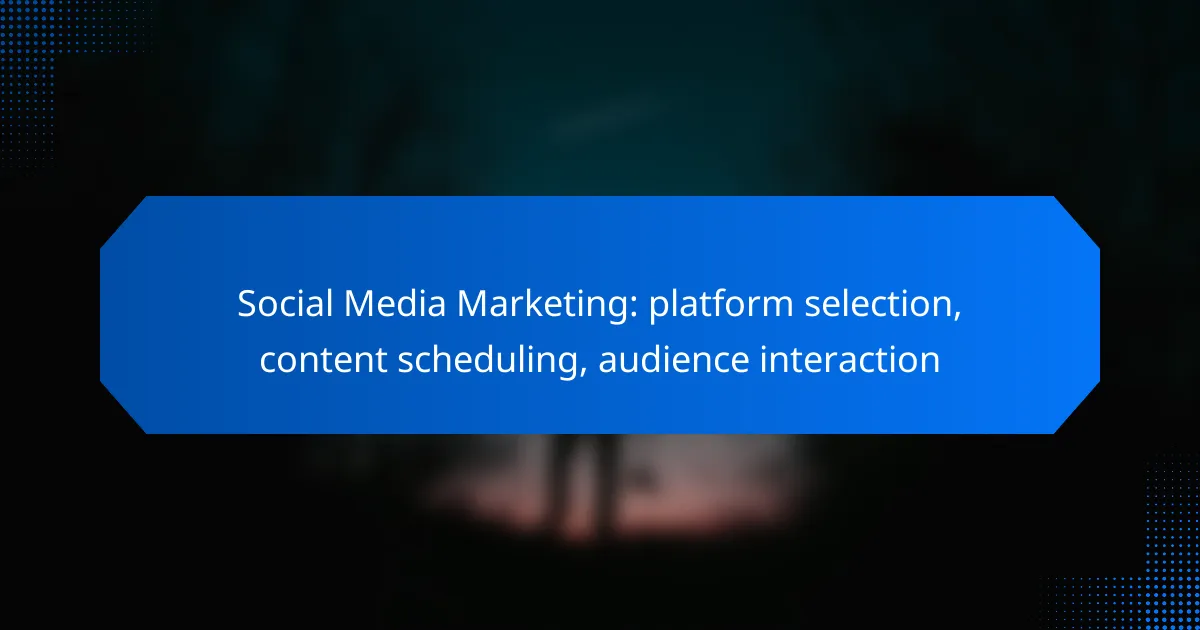PPC advertising is a powerful tool for businesses looking to enhance their online presence, but effective budget management is crucial for success. By setting clear financial limits and employing automated strategies, advertisers can ensure their spending aligns with business objectives while maximizing return on investment (ROI). Additionally, precise ad targeting and diligent ROI tracking are essential for reaching the right audience and evaluating campaign effectiveness.

How to manage PPC advertising budgets in Australia?
Managing PPC advertising budgets in Australia involves setting clear financial limits, utilizing automated strategies, and regularly monitoring performance. Effective budget management ensures that your advertising spend aligns with your business goals while maximizing return on investment (ROI).
Set clear budget limits
Establishing clear budget limits is essential for effective PPC management. Determine a monthly or weekly budget based on your overall marketing strategy and financial capacity. For Australian businesses, consider allocating between AUD 1,000 to AUD 10,000 monthly, depending on your industry and competition.
It’s crucial to distinguish between daily and lifetime budgets. Daily budgets help control spending on a day-to-day basis, while lifetime budgets provide flexibility over the campaign duration. Choose the approach that best suits your advertising goals.
Utilize automated bidding strategies
Automated bidding strategies can optimize your PPC campaigns by adjusting bids based on performance data. Google Ads and other platforms offer various options, such as Target CPA (Cost Per Acquisition) or Target ROAS (Return on Ad Spend), which can help maximize your budget efficiency.
These strategies analyze real-time data to make bid adjustments, potentially increasing your ad visibility while minimizing costs. However, monitor these settings closely to ensure they align with your specific business objectives and adjust as necessary.
Monitor spending regularly
Regularly monitoring your PPC spending is vital to stay within budget and assess campaign performance. Set up alerts to notify you when spending approaches your budget limits, allowing for timely adjustments. Use analytics tools to track daily and weekly expenditures against your set budget.
Review your spending patterns to identify trends or anomalies. This proactive approach helps prevent overspending and ensures that your budget allocation is effectively supporting your advertising goals.
Adjust based on performance metrics
Adjusting your PPC strategy based on performance metrics is crucial for optimizing your budget. Analyze key performance indicators (KPIs) such as click-through rates (CTR), conversion rates, and cost per click (CPC) to determine which ads are performing well and which are not.
Consider reallocating budget from underperforming campaigns to those yielding better results. Regularly reviewing these metrics allows you to make informed decisions, ensuring that your advertising spend is directed towards the most effective strategies.

What are effective ad targeting strategies for display advertising?
Effective ad targeting strategies for display advertising include demographic targeting, retargeting campaigns, and contextual targeting. These methods help ensure that ads reach the most relevant audiences, improving engagement and conversion rates.
Use demographic targeting
Demographic targeting involves selecting specific audience segments based on characteristics such as age, gender, income level, and education. This strategy allows advertisers to tailor their messages to resonate with particular groups, increasing the likelihood of engagement.
For example, a luxury car brand may focus on high-income individuals aged 30-55, while a children’s toy company might target parents aged 25-40. Using platforms like Google Ads or Facebook Ads, advertisers can easily set demographic filters to refine their audience.
Implement retargeting campaigns
Retargeting campaigns focus on users who have previously interacted with your website or ads but did not convert. By displaying ads to these users as they browse other sites, you can remind them of your products or services, encouraging them to return and complete their purchase.
For effective retargeting, consider segmenting your audience based on their behavior, such as pages visited or items viewed. This allows for personalized ads that can significantly increase conversion rates, often by double or more compared to standard ads.
Leverage contextual targeting
Contextual targeting places ads on websites or pages that are relevant to the content being viewed. This strategy ensures that your ads appear alongside related topics, increasing the chances of engagement from users who are already interested in similar subjects.
For instance, an ad for a fitness product would perform well on health and wellness blogs. Advertisers can use keyword targeting to match their ads with relevant content, creating a seamless experience for users and improving click-through rates.

How to track ROI in PPC advertising?
Tracking ROI in PPC advertising involves measuring the revenue generated from ads against the costs incurred. This process helps determine the effectiveness of campaigns and informs future budget allocations.
Set up conversion tracking
Conversion tracking is essential for understanding how well your PPC campaigns drive desired actions, such as purchases or sign-ups. Use tools like Google Ads or Facebook Ads Manager to set up tracking codes on your website that capture these actions.
Ensure that your tracking is configured to capture all relevant conversions, including micro-conversions like newsletter sign-ups, which can provide insights into customer engagement. Regularly review and update your tracking settings to align with your evolving business goals.
Calculate cost per acquisition
Cost per acquisition (CPA) measures how much you spend to acquire a customer through your PPC campaigns. To calculate CPA, divide your total ad spend by the number of conversions generated from those ads.
For example, if you spend $1,000 on a campaign and acquire 50 customers, your CPA would be $20. Aim to keep your CPA below your average customer value to ensure profitability.
Analyze customer lifetime value
Customer lifetime value (CLV) estimates the total revenue a customer will generate during their relationship with your business. Understanding CLV helps you determine how much you can afford to spend on acquiring new customers through PPC.
To calculate CLV, consider factors such as average purchase value, purchase frequency, and customer retention rate. For instance, if a customer typically spends $100 per purchase and makes three purchases a year over five years, their CLV would be $1,500. Use this figure to guide your PPC budget and strategy.

What criteria should be considered for PPC campaign optimization?
To optimize a PPC campaign effectively, focus on evaluating keyword performance, assessing ad copy effectiveness, and tracking return on investment (ROI). These criteria help ensure that your advertising budget is spent efficiently and that your ads reach the right audience.
Evaluate keyword performance
Keyword performance evaluation is crucial for identifying which terms drive traffic and conversions. Regularly analyze metrics such as click-through rates (CTR), conversion rates, and cost per click (CPC) to determine the effectiveness of your keywords.
Consider using tools like Google Ads Keyword Planner or SEMrush to track keyword performance over time. Aim for keywords with a balance of high search volume and low competition to maximize your budget.
Common pitfalls include over-relying on broad match keywords, which may attract irrelevant traffic. Instead, focus on long-tail keywords that are more specific and likely to convert.
Assess ad copy effectiveness
Ad copy effectiveness can significantly impact your PPC campaign’s success. Test different headlines, descriptions, and calls to action to see which combinations yield the best results. A/B testing is a practical method for comparing variations of your ads.
Ensure your ad copy aligns with the keywords you are targeting. This relevance improves quality scores and can lower your CPC. Use strong action verbs and clear value propositions to engage potential customers.
Avoid generic phrases that do not differentiate your offering. Instead, highlight unique selling points and include relevant promotions to entice clicks and drive conversions.

What tools can enhance PPC budget management?
Several tools can significantly improve PPC budget management by providing insights, forecasts, and optimization strategies. Utilizing these tools helps advertisers allocate their budgets more effectively and track performance in real-time.
Google Ads Budget Planner
The Google Ads Budget Planner is a built-in tool that assists advertisers in estimating their monthly budget based on historical data and projected performance. It allows users to input various budget scenarios and visualize how changes can impact their ad reach and clicks.
When using the Budget Planner, consider setting realistic goals based on previous campaigns. For instance, if your last campaign had a cost-per-click (CPC) of around $1.50, you might estimate a budget that allows for a few hundred clicks, depending on your goals. Regularly revisiting your budget estimates can help you stay aligned with market trends.
SEMrush PPC Toolkit
The SEMrush PPC Toolkit offers comprehensive features for managing and optimizing PPC campaigns, including budget tracking, keyword analysis, and competitor insights. This tool helps you identify which keywords are driving the most traffic and how much you should allocate to each.
To maximize the effectiveness of the SEMrush Toolkit, regularly analyze your competitors’ ad spend and strategies. This can reveal opportunities to adjust your budget allocation. For example, if a competitor is heavily investing in a specific keyword that you haven’t targeted yet, consider reallocating part of your budget to test its potential.

